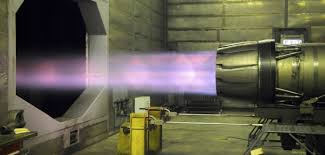
Breaking News
 Why Dual Engine Failure Changes Everything -- Louisville Crash Update
Why Dual Engine Failure Changes Everything -- Louisville Crash Update
 Transforming Storage Shelf / Workbench - Small Space Organization
Transforming Storage Shelf / Workbench - Small Space Organization
 Our 3-Step Strategy for a Stress-Free Pantry
Our 3-Step Strategy for a Stress-Free Pantry
 BEHIND THE DEEP STATE | The War on Farms
BEHIND THE DEEP STATE | The War on Farms
Top Tech News
 HUGE 32kWh LiFePO4 DIY Battery w/ 628Ah Cells! 90 Minute Build
HUGE 32kWh LiFePO4 DIY Battery w/ 628Ah Cells! 90 Minute Build
 What Has Bitcoin Become 17 Years After Satoshi Nakamoto Published The Whitepaper?
What Has Bitcoin Become 17 Years After Satoshi Nakamoto Published The Whitepaper?
 Japan just injected artificial blood into a human. No blood type needed. No refrigeration.
Japan just injected artificial blood into a human. No blood type needed. No refrigeration.
 The 6 Best LLM Tools To Run Models Locally
The 6 Best LLM Tools To Run Models Locally
 Testing My First Sodium-Ion Solar Battery
Testing My First Sodium-Ion Solar Battery
 A man once paralyzed from the waist down now stands on his own, not with machines or wires,...
A man once paralyzed from the waist down now stands on his own, not with machines or wires,...
 Review: Thumb-sized thermal camera turns your phone into a smart tool
Review: Thumb-sized thermal camera turns your phone into a smart tool
 Army To Bring Nuclear Microreactors To Its Bases By 2028
Army To Bring Nuclear Microreactors To Its Bases By 2028
 Nissan Says It's On Track For Solid-State Batteries That Double EV Range By 2028
Nissan Says It's On Track For Solid-State Batteries That Double EV Range By 2028
Leaked NASA Paper Suggests The 'Impossible' EM Drive Really Does Work

While it's important to note that the results that have been leaked haven't been published in an academic journal, they do suggest that the system works and is capable of generating force of 1.2 millinewtons per kilowatt in a vacuum. ScienceAlert reports: The paper concludes that, after error measurements have been accounted for, the EM Drive generates force of 1.2 millinewtons per kilowatt in a vacuum. That's not an insignificant amount -- to put it into perspective, the super-powerful Hall thruster generates force of 60 millinewtons per kilowatt, an order of magnitude more than the EM Drive. But the Hall thruster uses fuel and requires a spacecraft to carry heavy propellants, and that extra weight could offset the higher thrust, the NASA Eagleworks team conclude in the paper. Light sails on the other hand, which are currently the most popular form of zero-propellant propulsion, use beams of sunlight to propel them forward rather than fuel. And they only generate force up to 6.67 micronewtons per kilowatt - two orders of magnitude less than NASA's EM Drive, says the paper. The NASA Eagleworks team measured the EM Drive's force using a low thrust pendulum at the Johnson Space Centre, and the tests were performed at 40, 60, and 80 watts. They were looking for any sign that the thrust could be a result of another anomaly in the system, but for now, that doesn't appear to be the case.

 Carbon based computers that run on iron
Carbon based computers that run on iron

